
Student Profiles
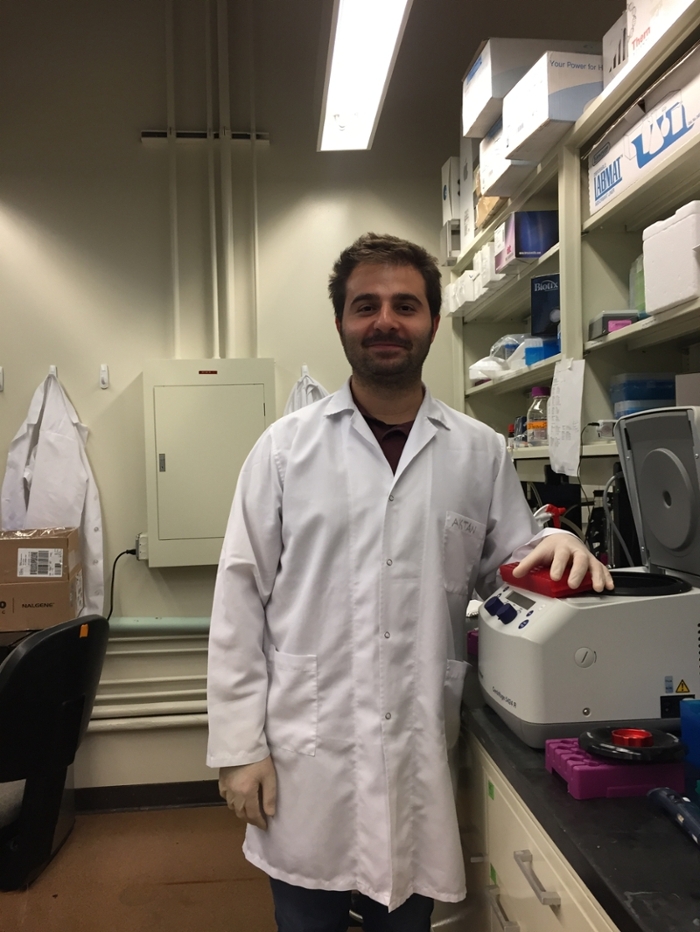
Aktan Alpsoy
In eukaryotic systems DNA -or the genome- is packaged into protein-dense units called chromatin. The basic unit of the chromatin, nucleosome, is composed of a core that is made up of histone proteins and DNA wrapped around that core. This compact structure is important to protect large eukaryotic genomes and fit it into a limited space, the nucleus. Besides these, the chromatin structure is crucial for dynamic regulation of fundamental events such as DNA replication, transcription, and repair of damaged DNA. More...
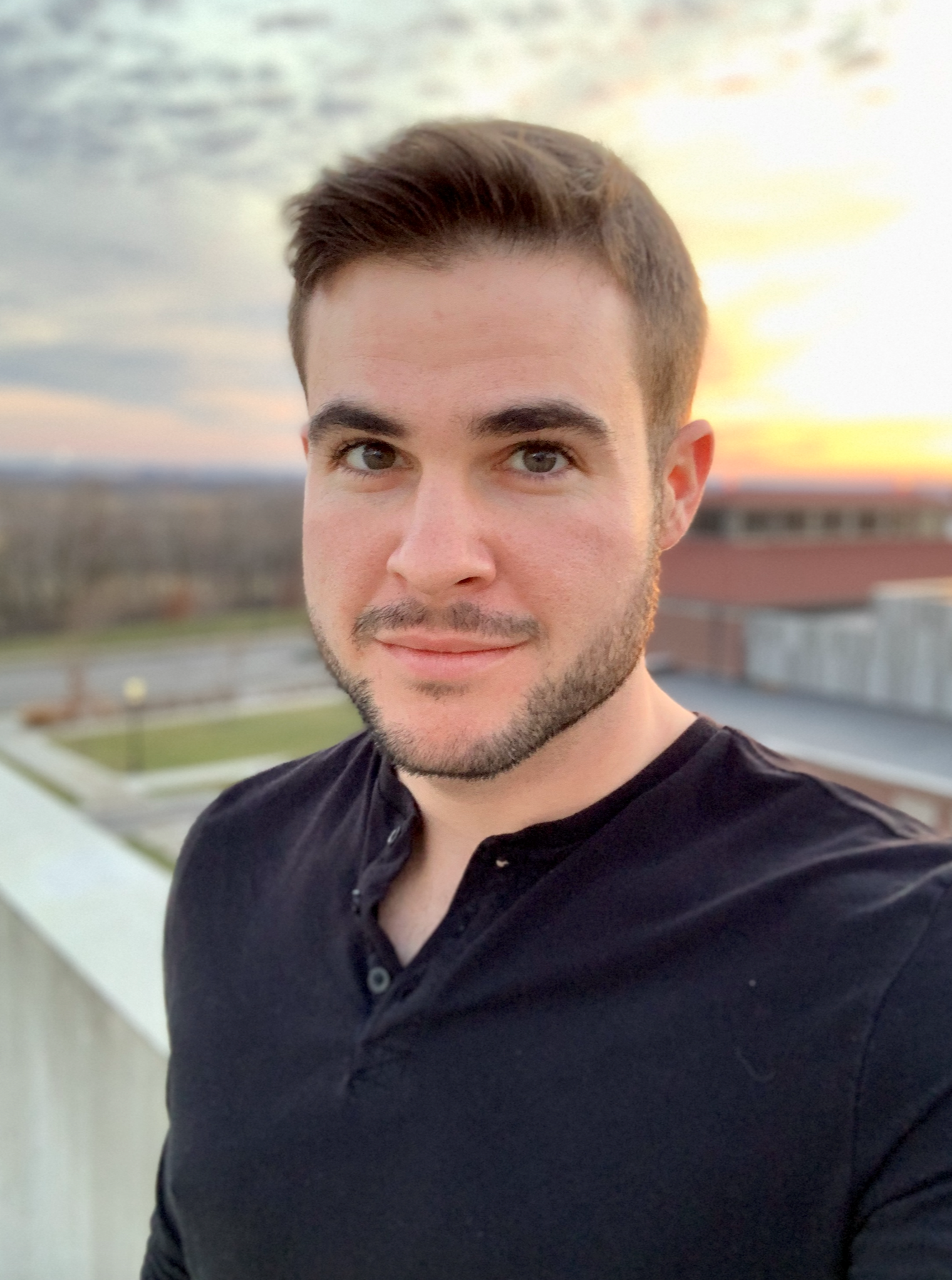
Andrew Asberry
Small cell cancers are notoriously aggressive and remarkably difficult to treat. These diseases are also referred to as neuroendocrine cancers, and are found particularly in lung, pancreatic, and prostate cancers. Due to the high frequency of diagnosis in men in the US, prostate cancer is one of the most extensively characterized and provides a clinical data-rich context in which to study the development and progression of neuroendocrine tumor biology More...

Carlos A. Brito-Sierra
PULSe student, Carlos Brito-Sierra, is doing research on mosquito-borne diseases (MBD) such as Dengue, Yellow Fever, Zika or West Nile, which are caused by the infection of viruses from the genus Flavivirus. More...

Clairissa Corpstein
Children with HIV require rigorous and complex oral drug regimens to keep their disease well managed, but adherence to these regimens is often difficult to maintain. These drugs are given in high doses multiple times a day, and are notorious for being poorly palatable. More...
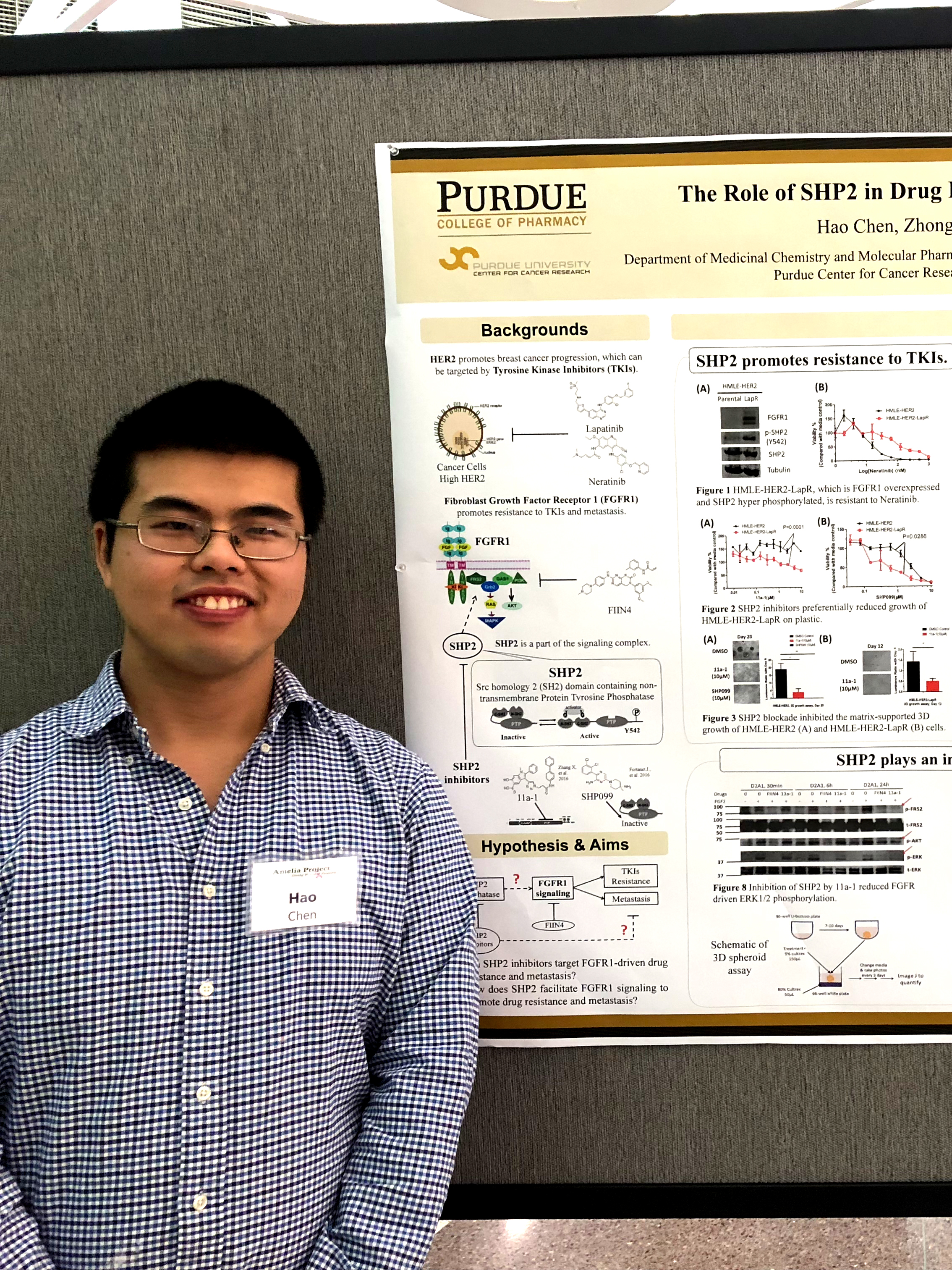
Hao Chen
Cancer remains the second leading cause of death among all the diseases in the world. Although multiple therapies have benefited patients in the last two decades, many cancers are still considered incurable diseases. There are multiple barriers to cross before we conquer cancer. More...
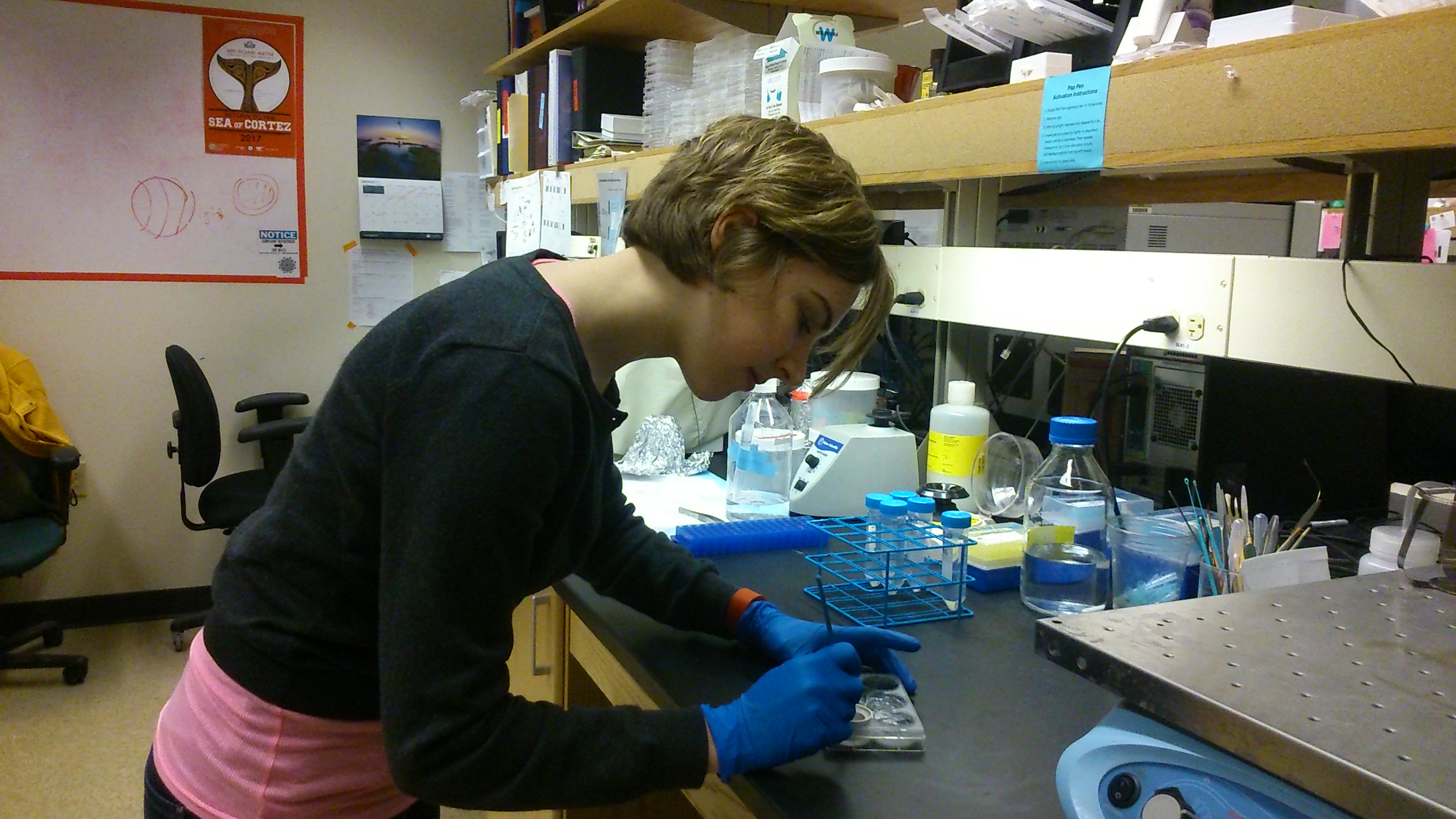
Rachel Foguth
PULSe student, Rachel Foguth, focuses on gene-environment interactions leading to Parkinson's Diseases. In these cases a genetic component would make a person more prone to the disease, and an environmental exposure tips the scale, leading to disease onset. More...
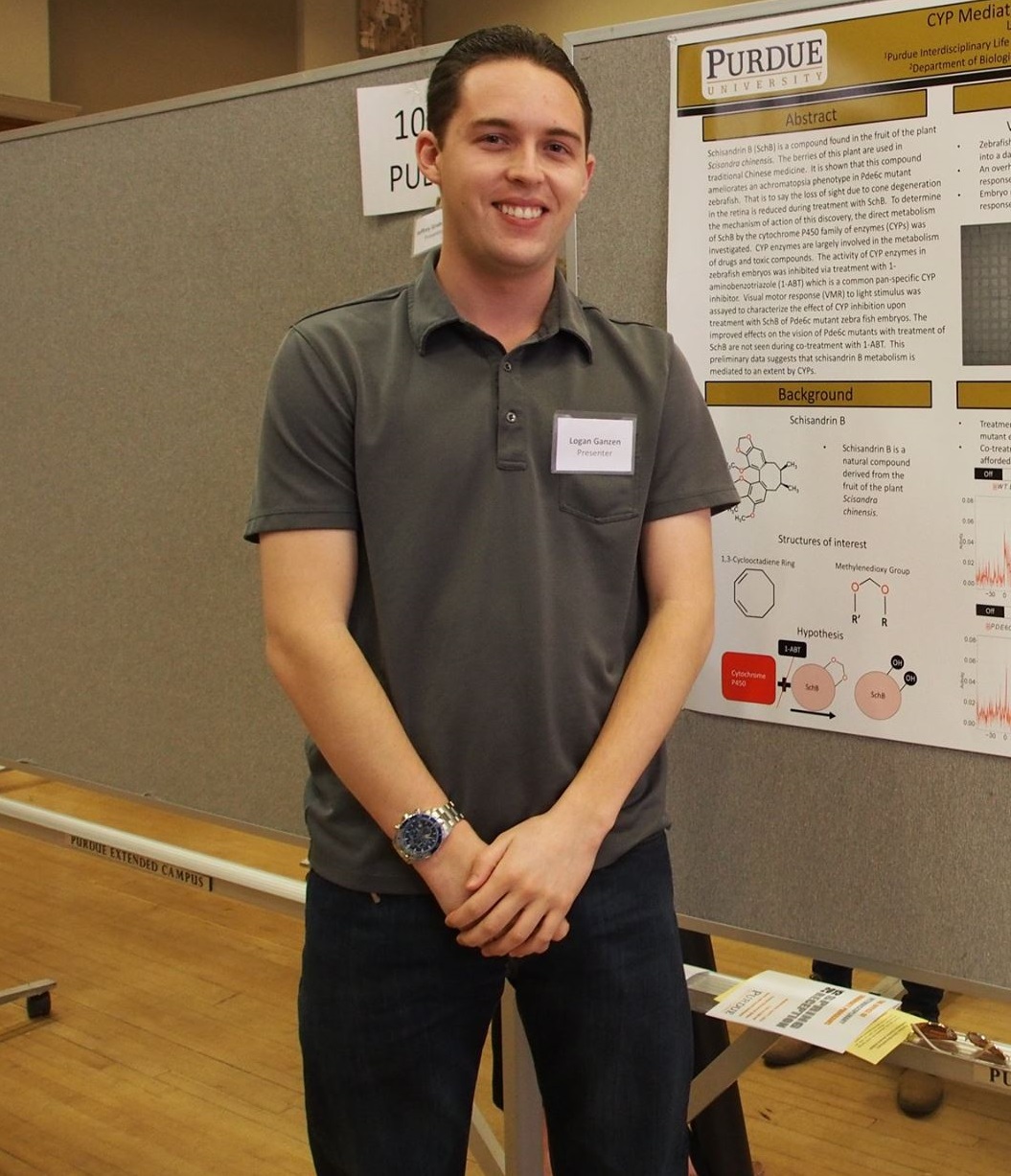
Logan Ganzen
PULSe student, Logan Ganzen's current research involves utilizing the zebrafish model organism in order to discover and develop treatments for the disease Retinitis Pigmentosa (RP). More...
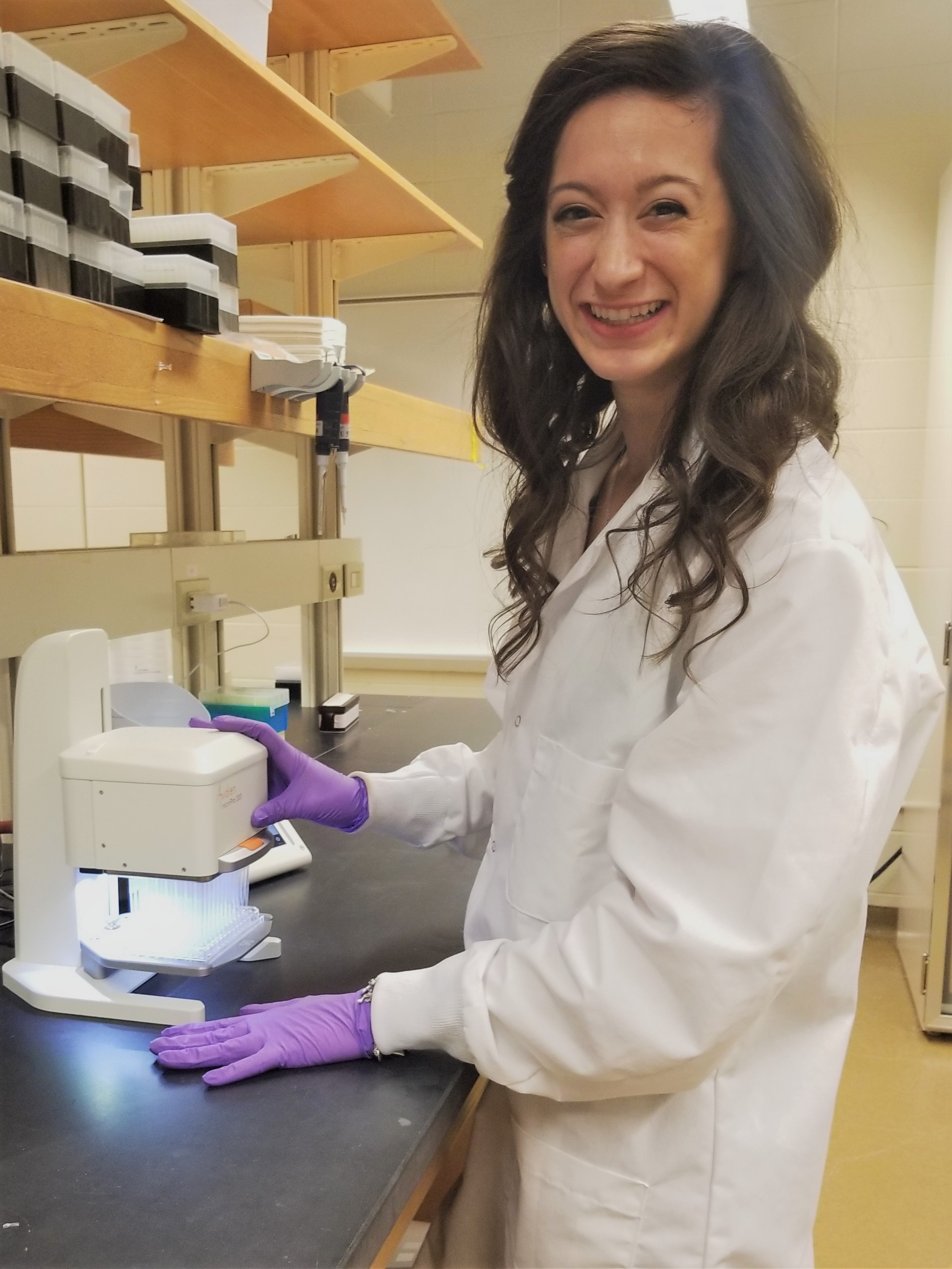
Veronica Heintz
PULSe student, Veronica Heintz, is doing research to identify virus-human protein-protein interactions (PPIs) in viruses such as Ebola and Zika. Her goal is to establish a deeper understanding of interactions that occur between human and viral proteins during viral infection. More...

Ethan Hillman
PULSe student, Ethan Hillman, researches an understudied group of fungi called the Neocallimastigomycota, which live in the highly competitive intestinal tract of large herbivorous animals. His research can be used to improve antibiotics and develop new strategies to fight potentially deadly infections. More...

Kathryn Jacobson
PULSe student, Kathryn Jacobson, focuses on determining the protein abundance, maturation, and dynamics of extracellular matrix (ECM) proteins as a function of development in the mouse musculoskeletal system. Ultimately, her goal is to reveal important changes in the matrisome during development and provide tissue engineers with directed criteria to design scaffolds that fully restore damaged tissues. More...
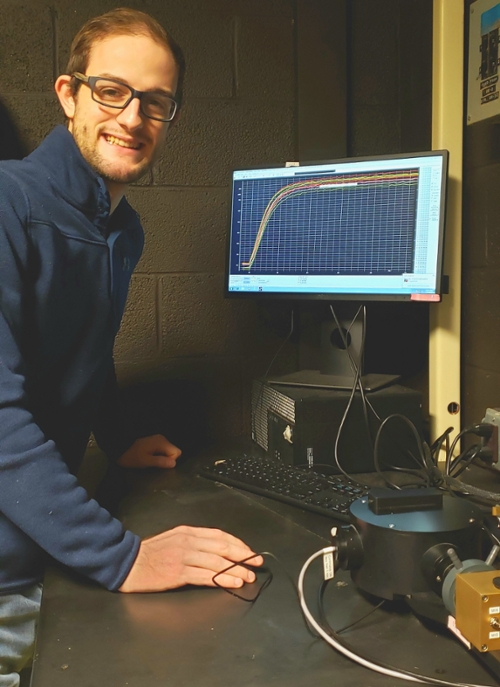
Steven McKenzie
Photosynthesis is a light-driven process that is responsible for generation of usable forms of chemical energy in plants, algae, and cyanobacteria. Photosynthetic electron transport uses the ubiquitously available energy from light to perform several complex redox reactions, driving the formation of the "energy currency" ATP and the reductant NADPH. More...
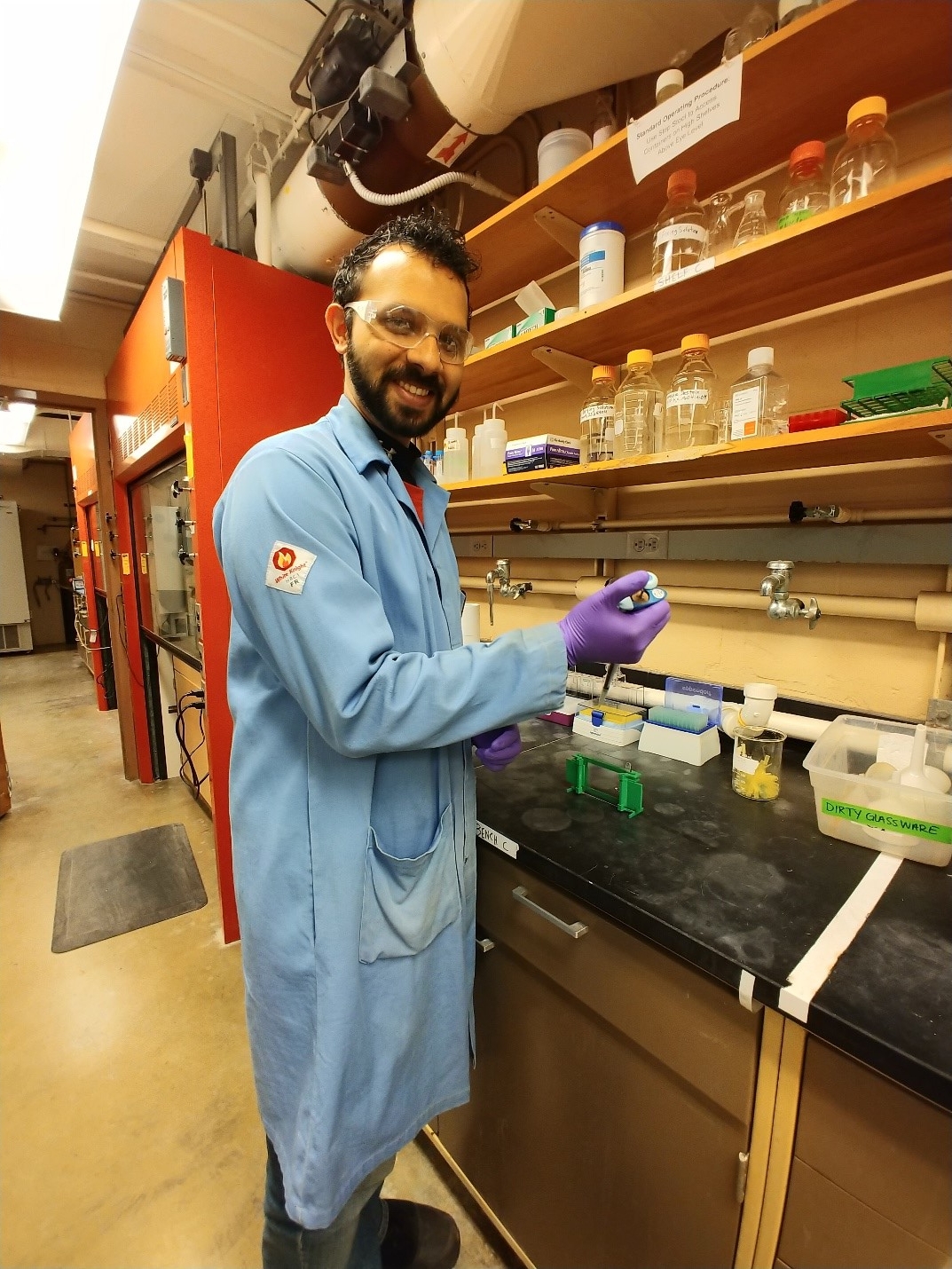
Vinay Menon
Antibiotic resistant bacteria is a growing concern in this country with the CDC reporting over 11,000 deaths from methicillin-resistant Staphylococcus aureus, or MRSA, in 2013 alone, making it the leading cause of hospital acquired infections. Adding to this issue is the ability of bacteria like MRSA, Salmonella, and TB to hide within the cells of the immune system where current antibiotics, like penicillin, are not effective. Once inside, these pathogens multiply rapidly eventually killing the immune cell and then spreading to other cells to start the cycle over again. More...

Jasmine Moore
Viruses carry a minimal amount of genetic information and are unable to replicate without host cells. By infecting and manipulating cells, viruses exploit a host’s cellular pathways for their own replication. My research area seeks to identify and characterize interactions between hemorrhagic fever viruses and human cells. Protein-protein interaction networks are constructed to show which cellular pathways are necessary for viral replication. Understanding these interactions can reveal ways to inhibit viral replication or transmission. More...
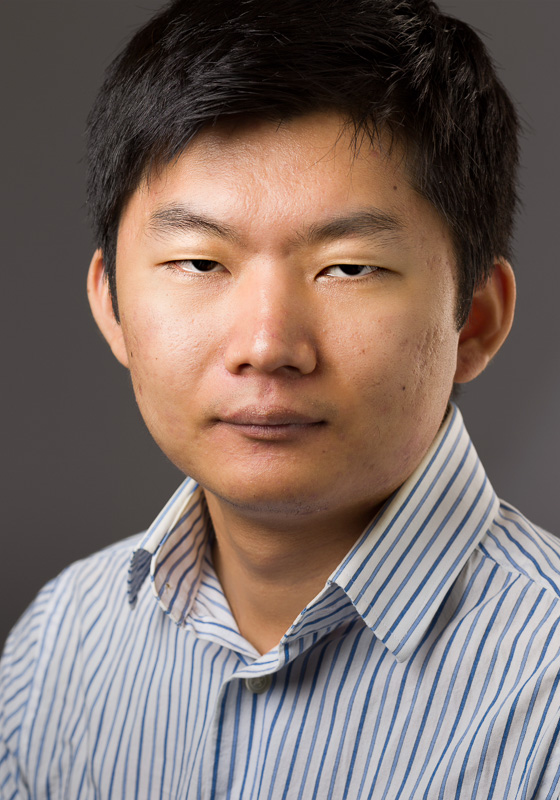
Alexandr Pak
PULSe student, Alexandr Pak, focuses on neural circuits underlying visual information processing and plasticity/learning. He is interested in determining how experience influences brain circuits and shapes our perception. More...

Raquel Peron
As human populations continue to increase, food security is a central challenge that affects society. Environmental change, water security, fertilizer inputs, and pests dramatically decrease yield productivity for globally important crops. The most efficient method to monitor crops and mitigate problems caused by environmental stress is identifying the stress events prior to the onset of visible symptoms at early stages. Traditional methods of monitoring plant stress, however, are logistically challenging at the field scale, which makes it difficult to efficiently detect plant stress responses. More...

Runrun Wu
The OMPs from Gram-negative bacteria have a membrane spanning domain that is composed of 8-36 β-strands into a β-barrel fold.These OMPs are essential for adhesion, signaling, and nutrient import. OMPs are first synthesized in the cytoplasm and transported into the periplasm through the Sec translocation machinery. More...

Sudhanshu Shekhar
Multiple layers of regulation orchestrate error-free expression of coding and non-coding genes in healthy cells to prevent diseases. Focused research on understanding cancer biology have elucidated multiple mechanisms as drivers of tumor progression, including alternative splicing. More...

Janiel Ahkin Chin Tai
Toxicology studies the adverse effects of chemical, physical and/or biological agents on people, animals and the environment. Toxicology as a field has helped detail the health consequences of exposure to synthetic and naturally occurring chemicals as well as establish regulations for drugs and treatment for disease. Some groups are more susceptible to toxicant exposure such as humans or animals that are developing. In my research lab, we study developmental toxicology of toxicants found in the environment, especially in drinking water. More...

Yu Tang
The visual cortex processes what we see, and the cortical neuronal circuits orchestrate in dynamic ways to interpret complex visual information. One of the factors that affect the way neuronal circuits fire is experience, and impairments in visual learning and processing has been found in various diseases. My current research interests lie in 1) Inter-areal visual cortical processing in mice with visual experience; 2) how novel treatment, like in vivo direct reprogramming, recovers visual processing in mice with ischemia. I hope my research would help better understand visual cortical processing and help push the novel treatment for impaired visual processing to clinical use. More...
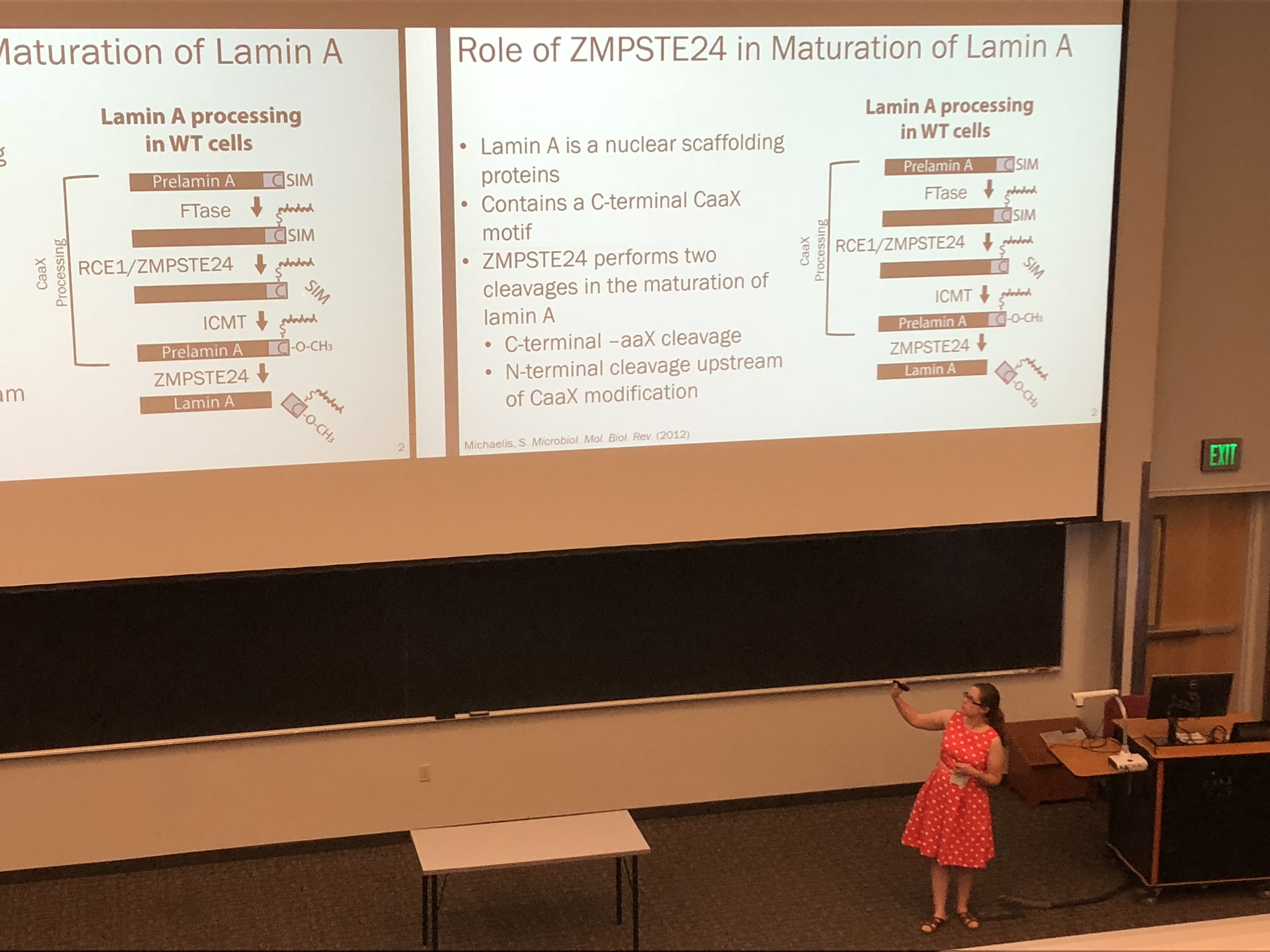
Chelsea Theisen
Chelsea's research focuses on characterizing the residues of human zinc metalloprotease, an intracellular transmembrane protein, by their role in substrate binding. More...
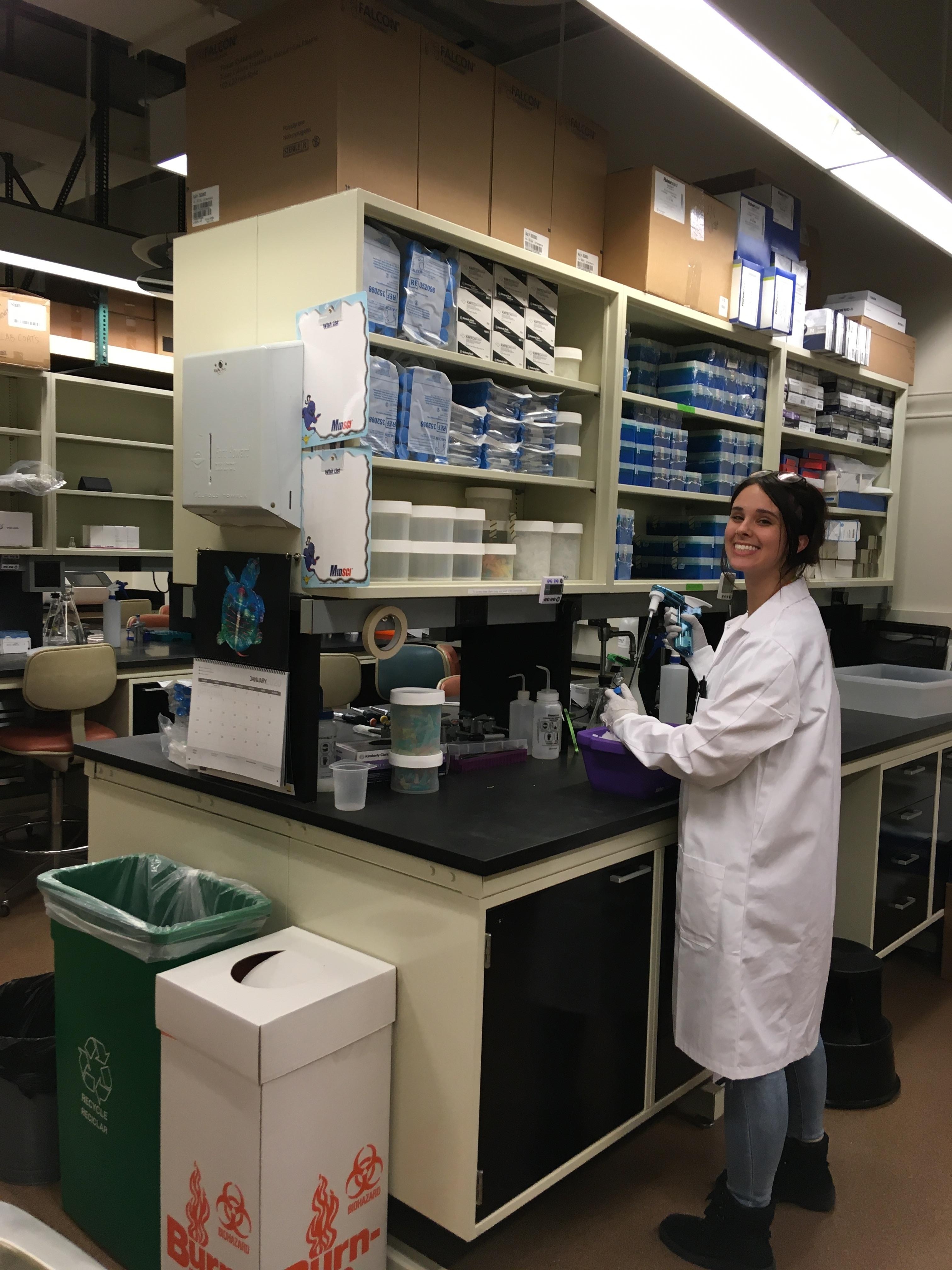
Samantha Tinsley
Pancreatic cancer is the 4th leading cause of cancer-related deaths in the United States with a 5-year survival rate of 10 percent. Presentation of pancreatic ductal adenocarcinoma (PDAC) in patients is associated with several genetic mutations, including oncogenic KRAS-activating mutations. More...

Nicole Vike
PULSe student, Nicole Vike, uses magnetic resonance imaging (MRI) to investigate novel biomarkers of sports-related traumatic brain injuries (TBIs) using magnetic resonance spectroscopy (MRS) and to understand the predictability of metabolic changes using data from sensors that detect linear and angular head acceleration events during contact sports practice and competition. More...
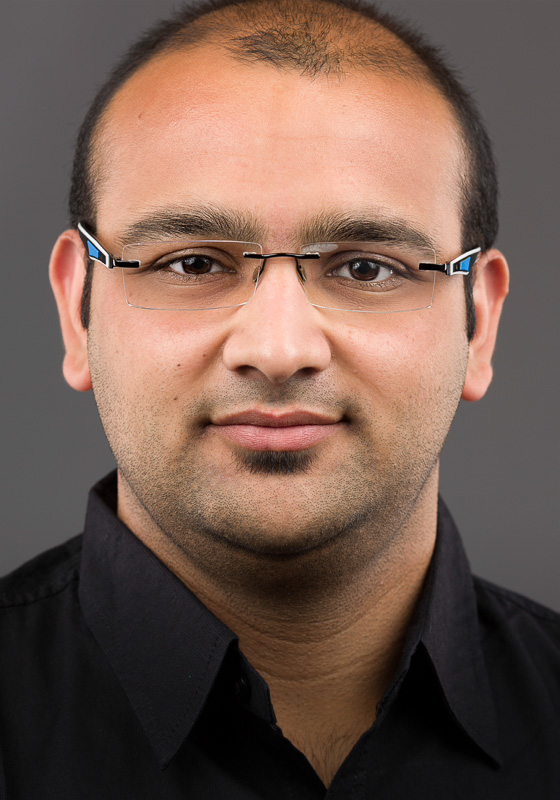
Ravi Yadav
PULSe student, Ravi Yadav, investigates the iron import and antimicrobial peptide protection functions of the lactoferrin binding protein (Lbp) system. His research will provide structural basis of the Lbp system’s role in Neisserial pathogenesis and pave the way for understanding the molecular mechanism of these functions. More...
- Student Profiles
- Aktan Alpsoy
- Andrew Asberry
- Carlos A. Brito-Sierra
- Clairissa Corpstein
- Hao Chen
- Rachel Foguth
- Logan Ganzen
- Veronica Heintz
- Ethan Hillman
- Kathryn Jacobson
- Steven McKenzie
- Vinay Menon
- Jasmine Moore
- Alexandr Pak
- Raquel Peron
- Runrun Wu
- Sudhanshu Shekhar
- Janiel Ahkin Chin Tai
- Yu Tang
- Chelsea Theisen
- Samantha Tinsley
- Nicole Vike
- Ravi Yadav

